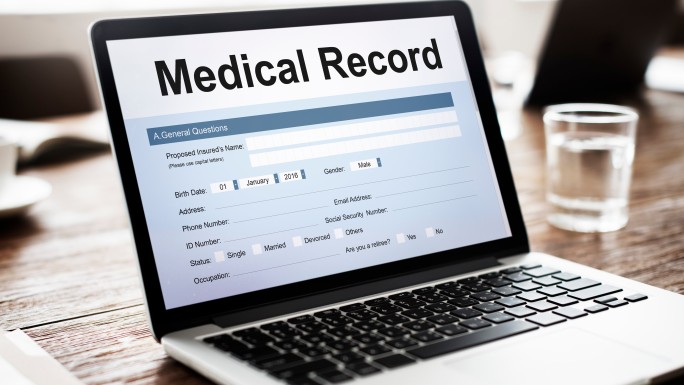Hospital Attendance Management System: Features and Benefits
In the fast-paced environment of healthcare, managing attendance is crucial for ensuring smooth operations and delivering quality patient care. Traditional paper-based attendance systems can be very time-consuming, error-prone, and difficult to control.
The great news is that you no longer need to deal with the issues posed by manual attendance systems anymore thanks to the invention of Hospital Attendance Management Systems. This innovative software is designed to revolutionize the way healthcare facilities handle attendance-related processes, offering a myriad of features and benefits that simplify workflow and enhance overall operational efficiency.
What is a Hospital Attendance Management System?
A Hospital Attendance Management System is a specialized software solution created to automate and streamline attendance tracking and managing of staff within a hospital or healthcare facility. The main purpose of a Hospital Attendance Management System is to replace paper-based methods of attendance management with a more sophisticated and automated approach.
Must-have features in a Hospital Attendance Management System
- Time tracking: By utilizing advanced methods, such as biometric systems or card readers, this system is able to accurately record and track staff attendance. When it comes to attendance, there are a lot of things to manage, including not just employees, out time but also their overtime. Controlling all of these would be extremely challenging for traditional paper-based attendance systems but with these advanced Attendance Management Systems, the staff’s burdens are decreased as these tasks will be automated.

- Leave Management: A robust Hospital Attendance Management System enables efficient leave management by automating the entire process. Employees now can request leaves online and managers can review and approve them immediately. The system will then automatically update the attendance records accordingly. This streamlines the leave approval workflow, reduces paperwork, and ensures accurate leave calculations.
- Shift Planning and Scheduling: With the help of an Attendance Management System, hospitals can easily create and manage work schedules for different departments and staff members. The system considers factors such as employee availability, skill sets, and workload requirements to generate optimized schedules. This improves resource allocation, reduces overtime costs, and ensures adequate staffing levels.
- Payroll Integration: Another outstanding feature of the Attendance Management System is its ability to integrate with the hospital's payroll system. Accurate attendance data is automatically synced, reducing manual effort and minimizing payroll errors.
- Reports Generation: Hospital Attendance Management Systems provide comprehensive reporting capabilities, offering insightful analytics on attendance, leaves, and other workforce-related metrics. Managers can access real-time data on employee attendance, punctuality, absences, and late arrivals. This data can be used to identify areas of improvement, enforce policies, and optimize staff deployment.
Prominent features that set your system apart
- Mobile support: Commonly, Attendance Management Systems are web-based only and this results in some inconveniences when the employees or managers access the system on phones because the mobile interface is not optimized. That's why we recommend you create a mobile application for the Hospital Attendance Management Systems.

- Cloud support: The centralized data storage in the cloud enables your staff to access their attendance information everywhere, every time as long as they have an internet connection. Additionally, the cloud can support regular attendance data backups, decreasing the risk of data loss and ensuring that all employees’ historical records are preserved.
How can hospitals benefit from the Hospital Attendance Management Systems?
- Boost Productivity: By streamlining the whole working process, Attendance Management Systems allow employees to focus on strategic tasks rather than spending time on manual attendance tracking and related paperwork.
- Enhance Payroll Accuracy: With accurate data input and the capability to sync attendance data with the payroll system automatically, these systems can generate timely and accurate payment calculations, ensuring fair compensation for employees. Thus, employees’ satisfaction will also increase because their working hours are calculated precisely and effortlessly.
- Improve Attendance Records Precision: Hospital Attendance Management Systems can reduce errors caused by manual entry and provide real-time visibility into staff availability. As a result, you can eliminate false staff performance and more importantly, increase staff satisfaction.
- Optimize Costs: These systems provide valuable insights into staff working hours and help you adjust working policies to minimize unnecessary overtime costs. Besides, the administrative fees are also reduced significantly as the hospitals don’t need to pay for physical storage and management of paper-based forms anymore.
- Safeguard Security: An additional benefit of the Hospital Attendance Management System is that it can enhance your hospital’s security. At hospitals that haven’t installed these systems, strangers can freely enter the hospitals and it’s very difficult to check their identities without a checking system because they can pretend to be staff or patient relatives. Implementing biometric or access card-based authentication adds an extra layer of security. This helps prevent unauthorized access and ensures staff accountability.
Conclusion
Implementing a Hospital Attendance Management System offers numerous benefits, ranging from streamlined workflows to reduced costs and improved security. By automating attendance tracking, leave management and payroll integration, hospitals can focus more on patient care, delivering better healthcare outcomes while still ensuring seamless operations.





